January 18, 2023
From the Vault: Roaming in ROAMER
A rare glimpse of the Herreshoff family's summer cruises aboard the steam yacht ROAMER
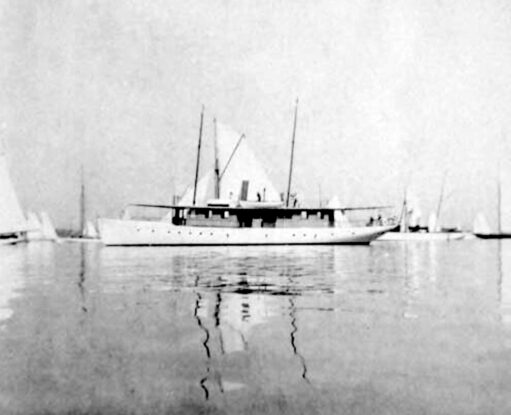
By Maynard Bray
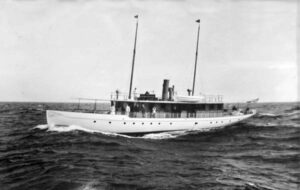
When asked to be substitute author for John Palmieri’s always-informative Curator’s Log, I was both honored and challenged. Having discovered that the museum held logbooks from N.G. Herreshoff’s steam yacht ROAMER (HMCo. #215), I decided to examine how N.G.H. and his family used the vessel during the busy and exciting summer of 1903 when the great sloop RELIANCE raced for and won the America’s Cup.
The 94-foot ROAMER was with the family for ten years, and 1903 was her second season having cruised to Maine her first year afloat. She’d been built of wood during the winter of 1901-02. A compact steeple-type, triple-expansion steam engine, also designed by N.G.H., pushed her along at 8 knots. Skinny and shallow, with a beam of less than a fifth her length and a draft of only 5 feet, she tended to roll in a beam sea, so N.G.H. gave her 890 square feet of sails divided between two masts to steady her as well as help push her along when the wind served. The log shows that sails were set frequently.
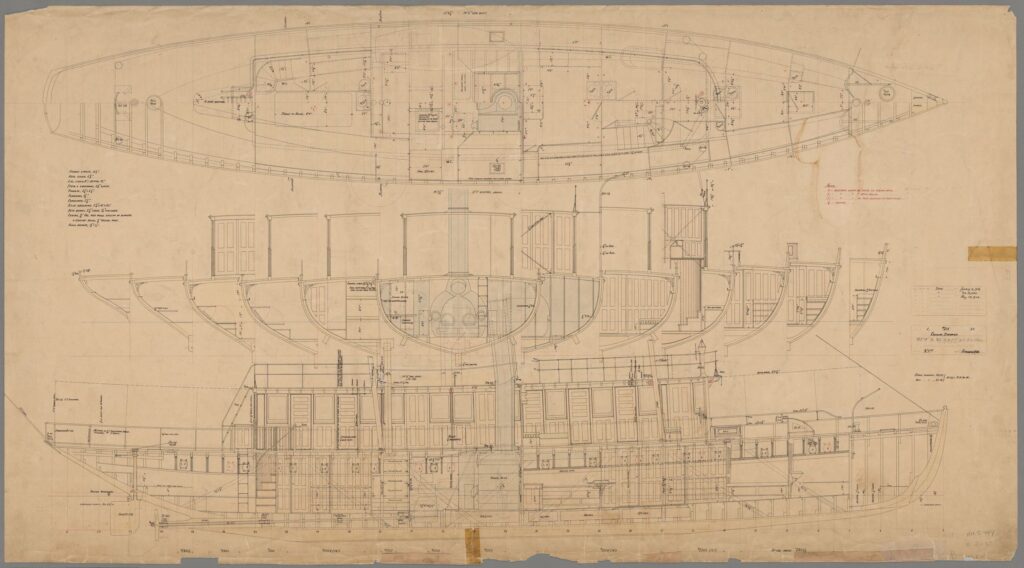
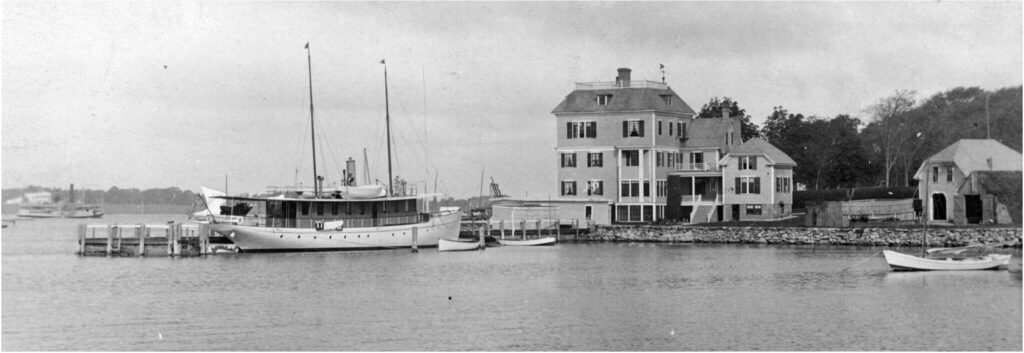
What took place during that fabulous summer shows up in N.G.H.’s own hand. ROAMER went on ten cruises, four of them west to New York and the rest in the opposite direction toward Buzzards Bay and Vineyard Sound. The equivalent of 12-1/2 days of short runs occurred between cruises as well. In the 334 hours and 14 minutes underway at an average speed of 7.45 knots, ROAMER covered 2,486 miles in 1903, burning 47 tons of coal, according to N.G.H.’s last-page summary. Guests as well as family came onboard, so ROAMER and her four-man professional crew (mate, engineer, steward, and sailor) stayed busy from mid-May to near the end of October.
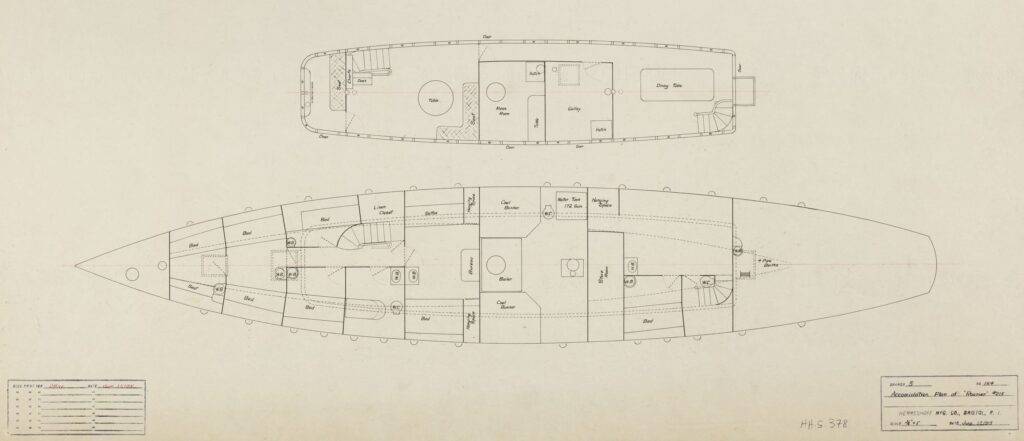
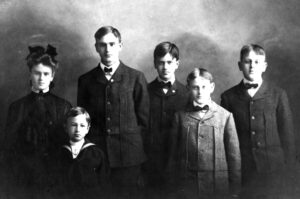
The two big events of 1903 were the annual New York Yacht Club Cruise of nearly two weeks duration, in mid-July, and the America’s Cup Races of late August and early September. The entire N.G. Herreshoff family would be on hand for both. N.G.H., age 55, and his wife Clara, 49, had by then six children whose ages ranged from 8-year-old Clarence to Agnes, their only girl, who was 18. In between were 16-year-old Sid, Nat, Jr. (15), Griswold (14), L. Francis (12), and Clarence, age 8.
N.G.H. designed ROAMER specifically for his family, with staterooms and crew’s quarters below deck, and sitting and dining within the deckhouse separated by the galley. He and Clara (always “Caddie” to him) occupied the largest stateroom, located just forward of the machinery space. Their children slept immediately aft of that space where there were four pipe berths for the older boys and an enclosed compartment for Agnes. Young Clarence, I imagine, shared his parent’s stateroom. The crew’s quarters were all the way aft, and forward of the owner’s stateroom, were three guest staterooms as well as another in the forepeak— probably for the mate—accessed from the deck, as were the crew’s quarters aft.
ROAMER could be steered from either inside the deckhouse or out in the open above it. Neat, practical, and relatively simple, ROAMER perfectly mirrored N.G.H.’s philosophy.
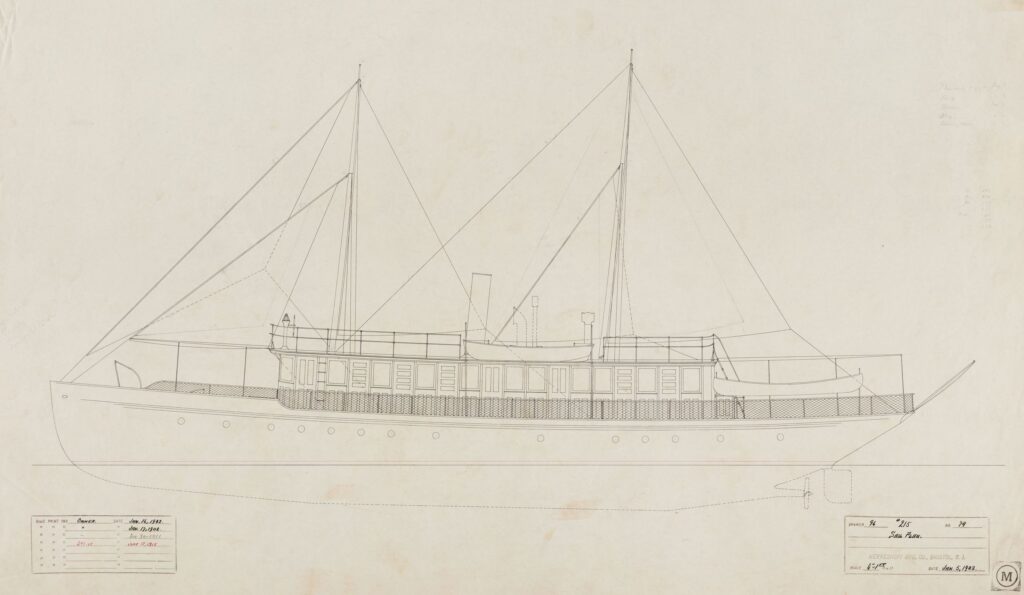
Besides launching six children in ten years, N.G.H. launched five Cup Defenders in the same length of time: VIGILANT (1893), DEFENDER (1895), COLUMBIA (1899), CONSTITUTION (1901), and RELIANCE (1903). He and his family would see all of them except DEFENDER sailing in 1903, the only year they all sailed together—and RELIANCE’s only year afloat. It was curtains for the so-called 90-footers, and another 17 summers would pass before another America’s Cup Race.
So much happened during that single summer that I found myself wandering down path after path, any one of which could take several pages to describe. Here are a few much-abbreviated examples:
June 11, 1903
Returning from Sandy Hook and her second cruise, ROAMER faced thick fog as she departed Port Jefferson at 5:24 a.m. after anchoring there for the night. It was calm, and finding themselves too far south when the fog scaled up a little and they got a glimpse of the Cornfield Lightship, they overcompensated on the next leg and “ran over Bartletts Reef well in, and stopped [at 11:45] to feel [their] way.” They then changed course to south (parallel to the reef) and in the “young ebb” tide, picked up Bartlett’s Reef Light Vessel LV-13 (a wooden 80-footer with hand-operated horn) and continued on past New London and into Fishers Island Sound where the fog lifted.
N.G.H.’s words “ran over,” I suspect, indicate that the sounding lead revealed shallow water, not that ROAMER ran aground. With only a compass and timepiece for navigation, they’d no doubt have run out their time and slowed down, creeping up on the reef, which was long, and square to their course.
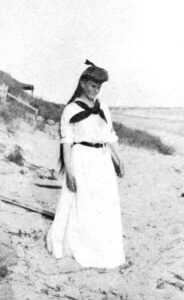
N.G.H. lists himself as ROAMER’s captain, and J.H. Into as mate that year, and I can see them both in oilskins at the fully-exposed steering station atop ROAMER’s long deckhouse, searching for the next buoy or lightship, holding exactly to the compass course they’d laid out, and keeping close track of the elapsed time. Knowing where they were was challenge enough, but in those days they had to be ever watchful for the big passenger steamboats that ran up and down the Sound at 20 knots between Fall River and New York.
ROAMER, despite the fog and her close encounter with Bartlett’s Reef (and the fog shutting down again off Point Judith), made it home to Bristol from Port Jefferson in about 12 hours averaging over 8 knots.
June 27, 1903
Perhaps as a graduation gift, Agnes got to take her high school classmates and their teachers out for a 28-mile jaunt in ROAMER. They passed through Newport and the surrounding areas, then returned to Bristol. In N.G.H.’s words: “a fine day and all enjoyed it.”
July 2, 1903
On only a few occasions did N.G.H. not take his family along but, for business, going to Newport by ROAMER beat going by horse and buggy, so he had only his crew aboard when he headed there and joined RELIANCE for a trial race against the two other 90-footers in a “strong WSW breeze and sea.” There’d been a fresh easterly the day before, so I imagine the sea was running high. It proved to be quite a day: “Early in the race, CONSTITUTION broke her gaff and near the windward mark, COLUMBIA lost a man when RELIANCE was fully ½ mile ahead. RELIANCE finished alone.”
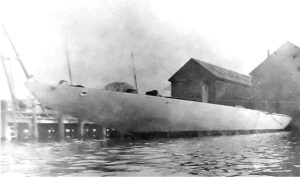
In this race, RELIANCE’s long, flat bow pounded so hard that its plates dented and she had to return to Bristol for repair and strengthening. She was never required to sail in such severe conditions again, but now was ready, nevertheless.
July 16, 1903
ROAMER headed west for Glen Cove on Long Island, anchoring the first night behind the Saybrook breakwater. Onboard as cargo were a topsail yard for COLUMBIA and “many other things for CONSTITUTION, RELIANCE and INGOMAR.” It was fine weather when they anchored in Glen Cove where yachts were “beginning to gather for the annual cruise of the New York Yacht Club” By evening, “a large number of yachts [are] in port.”
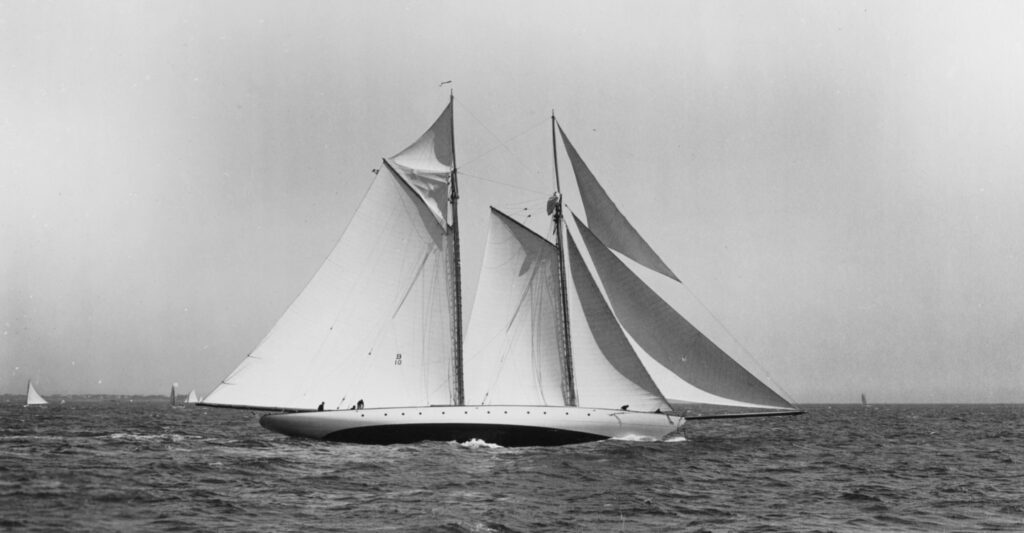
Instead of sailing aboard RELIANCE as he’d done during her trials, N.G.H. stays aboard ROAMER all during the NYYC cruise, but watches and records how she and his two other 90-footers perform, and keeps tabs on his latest creation, the 122’ LOA steel schooner INGOMAR. (RELIANCE first hit the water on April 12th and INGOMAR on June 24th, the latter vessel completed only a few days before the cruise began.)
Compared to those yachts and the rest of the grand fleet gathered for the cruise, the businesslike ROAMER looked rather modest. The man behind ROAMER’s wheel may have looked unpretentious as well, but it’s safe to say that the yachts he’d designed and that sailed that summer—especially RELIANCE—received more attention than all the others put together.
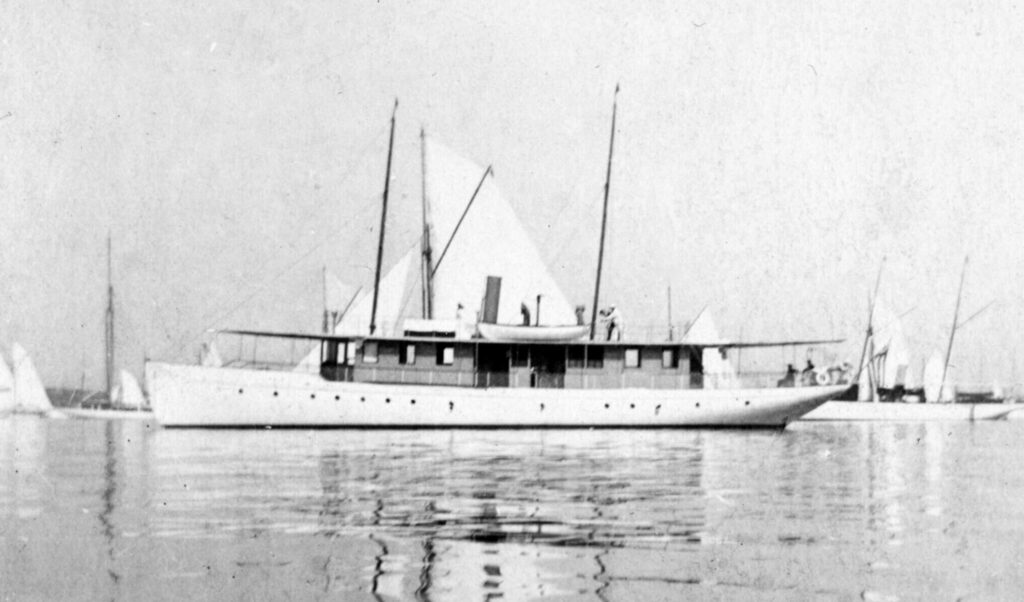
August 15, 1903
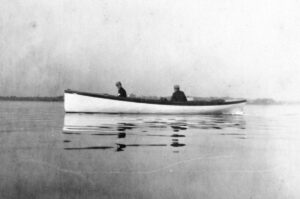
ROAMER again headed for Sandy Hook to be there for the official America’s Cup contest. The best of three races would determine whether RELIANCE would keep the Cup in America or SHAMROCK III would take it across the Atlantic. All the Herreshoffs were onboard, and the second day of ROAMER’s 4th cruise began with a stop at the Erie Basin, around the corner from the Brooklyn Bridge in Red Hook, facing Governor’s Island and, in the distant background, the Statue of Liberty. Both RELIANCE and SHAMROCK III were drydocked for measuring—to be carried out on the 18th by C.D. Mower, under the eyes of the yachts’ designers.
ROAMER’s log reads, “After inspecting RELIANCE in drydock, [we] got underway and ran up [the] Hudson R[iver] and anchored under the Pallisades a little below Yonkers. A very interesting day to all, and particularly to the boys who went ashore at [the] Erie Basin and saw vessels in drydock, including SHAMROCK III, [the] st[eam] yacht EMERALD and others. The boys climbed to top of Pallisades.”
With their father’s help, the three older Herreshoff boys, Sid, Nat, and Griswold, had built themselves a lovely little motor launch the previous winter that they named NEON—a 21-footer shaped like a stretched-out Whitehall rowboat—and convinced their father to bring her along on the end of a towline off ROAMER’s stern. In NEON they explored Roundout Creek after ROAMER moved farther upriver and dropped anchor off Kingston.
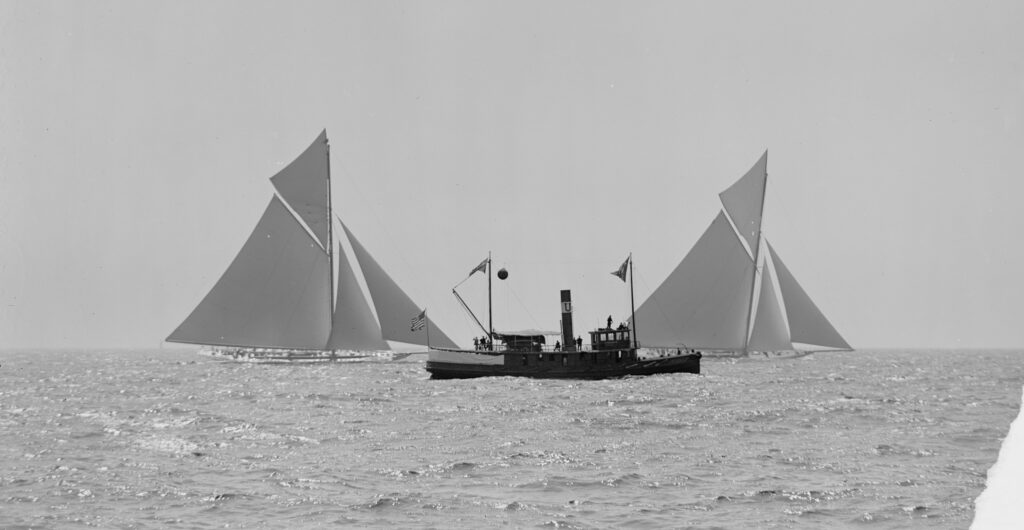
August 24, 1903
NEON came into play once more while ROAMER lay at anchor at Sandy Hook awaiting the Cup Races. N.G.H. records the day: “Off in RELIANCE in forenoon to try sails. In afternoon, ran over to Atlantic Highlands [in ROAMER] to get provisions then to the mouth of the Shrewsbury River and anchored. All the party went in NEON and the dinghy up the Shrewsbury as far as Seabright and returned at 6-10. Got underway and ran up to Sandy Hook for the night.”
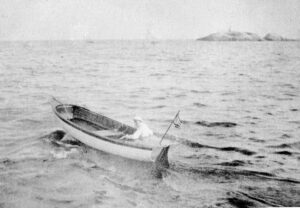
August 26, 1903
Two days later, they repeated this same run, going all the way to Galilee but using ROAMER’s electric launch for the passenger overflow instead of the dinghy.
August 27, 1903
N.G.H. sailed in RELIANCE with her great skipper, Charlie Barr, for all the Cup races, leaving ROAMER in charge of Mr. Into, her mate, who, along with some 150 other big yachts, chased along as spectators. As a viewing platform ROAMER was ideal, just as N.G.H. had planned her to be. Agnes could climb the stairway from the aft deck where, as the unofficial family photographer, she could get off a perfectly clear shot with her camera in any direction. A pipe rail all around kept the area safe and no doubt made it a favorite perch for the other “Roamers” desiring a good view. The more sedate among them, however, weren’t deprived, as they could stay on the main deck under the shelter of the awnings—or look out from inside the many-windowed cabin.
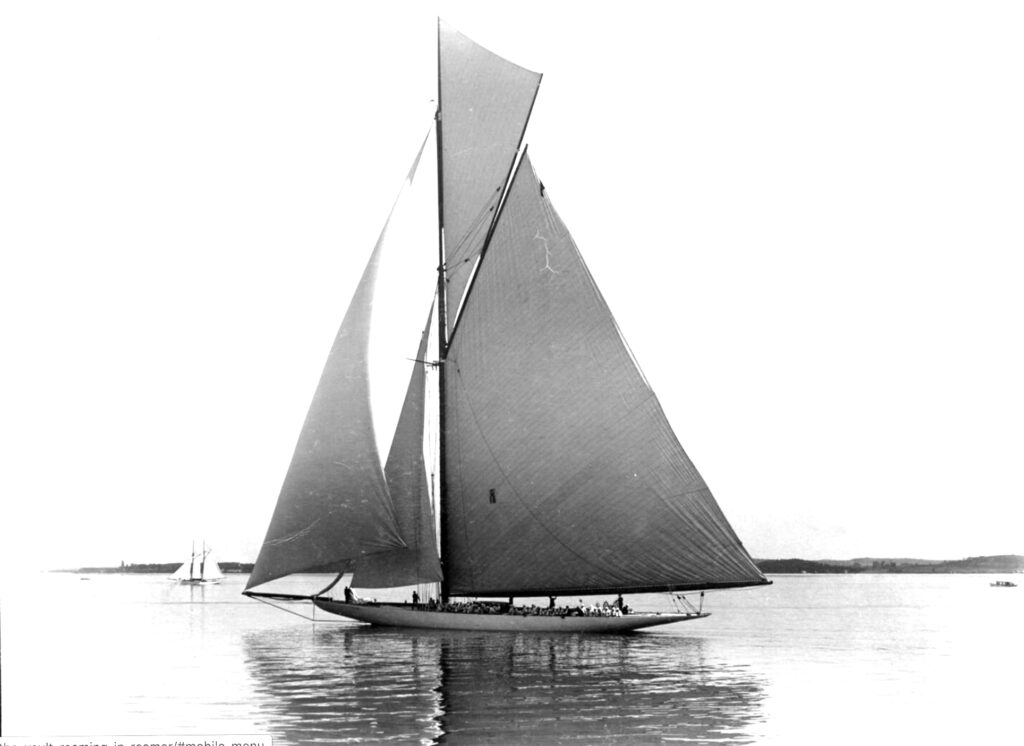
August 28 to September 2, 1903
Days of no wind plagued the 1903 America’s Cup Races, along with a three-day easterly storm. Getting off the third and final race took a week, in fact, all of it finding ROAMER anchored with the others off Sandy Hook. “NE wind. Temp[erature] 58-59 degrees. Heater turned on in cabins and all are very comfortable lying at 2 anchors close under the Hook.” The chart indicates there’s not much of a harbor there, so it’s understandable why the subsequent contests were held off Newport.
September 3, 1903
The weather and the waiting must have been frustration to the Roamers. This was ROAMER’s longest cruise and I suspect all aboard were anxious to get back home. N.G.H. makes no big deal of winning on September 3rd (“RELIANCE finished in about 4 hours 30 minutes. SHAMROCK lost in fog and missed the lightship”), ROAMER starts for home early the next day, running up the Sound, anchoring for the night in New London, and arriving in Bristol on the 5th.
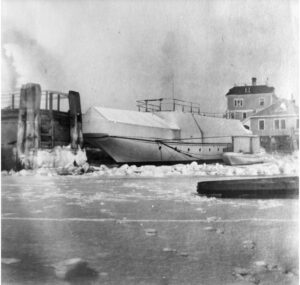
September 8 & 10, 1903
N.G.H. used ROAMER for a few hours on both days to deepen her berth off the Herreshoff home at Love Rocks where she’d be lying for the coming winter—this to be her first one afloat. Her propeller churned up the bottom and drove out the mud.
September 13, 1903
A week after arriving home from Sandy Hook, the Herreshoffs are off again, on a cruise from Bristol to Westport to Woods Hole to Hadley’s Harbor where they called on J. Malcolm Forbes (who the previous year had had AZOR built by HMCo.). “He took the party to ride over the island of Naushon.” They were back before noon; then the Roamers ran up to West Falmouth, had Messrs Baker and Dennison aboard, and at 2:45 p.m. headed for New Bedford in dense fog, arriving before dark at 5:40.
For reasons not explained but possibly because of school, 12-year-old L. Francis was not aboard for this cruise nor any others that year.
September 14, 1903
It was Monday and N.G.H. got “the four boys Sidney, Nat, Griswold and [their friend Carl Rockwell who would later own ALERION and commission BELISARIUS] ashore at 5:15 a.m. to catch a train home in time for school.” ROAMER arrived back in Bristol at 11:45 a.m.
September 18 to October 25, 1903
Martha’s Vineyard, Cuttyhunk, South Dighton, Warren, and Providence showed up in the log among ROAMER’s ports of call before she was laid up and the crew paid off on October 25th.
So ends a glimpse of N.G.H. as a father and a yacht captain, and so ends what L. Francis Herreshoff, son #4, called “the greatest year in the annals of yachting.”


*****
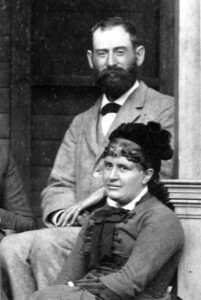
Cancer took N.G.H.’s dear wife Clara on November 28, 1905, but ROAMER remained in the family until 1912 (Captain Nat’s extant logs go through 1908) when N.G.H. sold her to John K. Robinson of New York. By then the Herreshoff children were pretty well grown, N.G.H. was near retirement, and ROAMER was needlessly large. The handsome HELIANTHUS, a 64-footer launched in 1912, replaced her—powered by gasoline, not steam, so that N.G.H. would not need a crew or a licensed engineer.
How N.G.H. could take off nearly an entire summer and still, when working, produce design after design in excruciating detail is nothing short of amazing. Besides RELIANCE and INGOMAR, already mentioned, his other recent drawings had kept HMCo. going full tilt all the previous winter and spring:
November 15, 1902: Launched the 112’ LOA steam yacht EUGENIA
November 15, 1902: Launched the 46’ LOA sloop NELLIE
November 29, 1902: Launched the 131’ LOA steam yacht PARTHENIA
December 6, 1902: Launched the first BH-31 class sloop, KUWANA
February 4, 1903: Launched the 132’ LOA steam yacht WANA
March 17, 1903: Launched the 59’ LOA steam launch SUNBEAM
March 20, 1903: Launched the 35’ HMCo gasoline towboat FRIDAY
March 25, 1903: Launched the 50’LOA gasoline launch ADRIENNE
May 2, 1903: Completed the last of the thirteen 49’ BH-31 class sloops
June 29, 1903: Launched the 70’ LOA keel/centerboard cutter IROLITA
This piece was originally published as a Curator's Log post in December 2016. It has been revised and updated to include plans, photographs and links to further resources.
